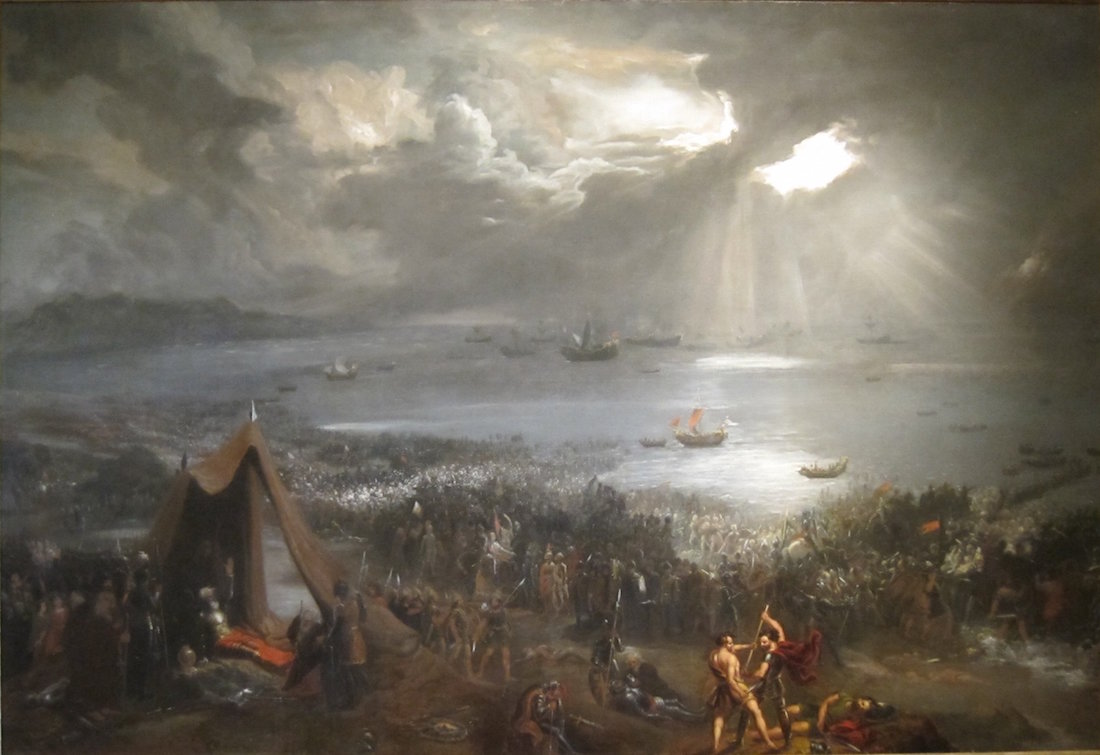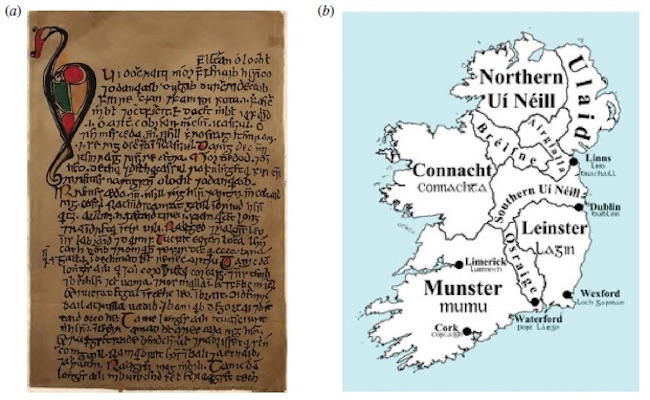Medieval Text Resolves Mystery of Viking-Irish Battle

The famous Irish king, Brian Boru, is widely credited with defeating the Vikings at the Battle of Clontarf more than 1,000 years ago. But not everyone heaps praise on the king. For the past 300 years, historians have cast doubt on whether Boru's main enemies were the Vikings, or his own countrymen.
Perhaps, say these so-called revisionists, the Battle of Clontarf was actually a domestic feud — that is, a civil war — between different parts of Ireland.
To settle the matter, researchers analyzed a medieval text used by both traditionalists and revisionists to bolster their arguments. The results are a boon for Boru: The hostilities revealed in the text largely indicate that the Irish fought in an international war against the Vikings, although Irish-on-Irish conflict is also described in the manuscripts, according to the new study, published online today (Jan. 24) in the journal Royal Society Open Science. [Fierce Fighters: 7 Secrets of Viking Culture]
Tumultuous history
The medieval Irish text, known as Cogadh Gaedhel re Gallaibh ("The War of the Gaedhil with the Gaill"), describes how an army led by Boru challenged the Viking invaders, culminating in the Battle of Clontarf in 1014.
The Vikings weren't new to Ireland. Viking raids against the Emerald Isle began in A.D. 795. In the decades that followed, the Vikings took over Dublin and built camps that evolved into the settlements of Cork, Limerick, Waterford and Wexford, said study lead author Ralph Kenna, a professor of theoretical physics at Coventry University, in the United Kingdom.
But Boru wanted a unified Ireland, and the Vikings and various regional kingdoms stood in his way. Boru achieved his goal of unification in 1011, but merely a year later, the province of Leinster and Viking-controlled Dublin rose against him, leading to the Battle of Clontarf. (Boru's army defeated Leinster and the Vikings, but victory came at price for Boru, as he was killed at Clontarf.)
Leinster's role in the battle led revisionists to describe the conflict as a civil war, Kenna said. The 18th-century revisionist Charles O'Connor wrote that "in the series of events that led to Clontarf, it was not ... the Norse [the Vikings] but the Leinstermen, who played the predominant part," Kenna told Live Science, adding that the historian "put forward the view that the conflict is not a 'clear-cut' one between Irish and Viking."
Get the world’s most fascinating discoveries delivered straight to your inbox.
"In recent years, this revisionist view has gained a lot of traction and a 'new orthodoxy' is being constructed," Kenna said. "For example, in 2014, which was the 1,000th anniversary of the Battle of Clontarf, an Irish TV station ran a documentary about the conflict with footage of a rugby match," Kenna said, referring to the use of rugby footage to dramatize the conflict. "The rugby match was between the Irish provinces of Munster and Leinster. This was as if to suggest that the battle was mainly between two provinces in Ireland — not Irish versus Vikings."
Network analysis
To investigate, the researchers dove into a 217-page, 1867 translation of Cogadh Gaedhel re Gallaibh by James Henthorn Todd.
The research team used social network theory, which measured to what extent the Irish and Viking characters in the text were linked to each other. [Emerald Isle: A Photo Tour of Ireland]
"The analysis had to determine whether hostility between characters was mostly Irish versus Viking, or Irish versus Irish (or, indeed, Viking versus Viking)," Kenna said. "A simple tally of hostile interactions between characters will not do, as this would not account for different numbers of Irish and Vikings."
They found that the text doesn't indicate a "clear-cut" Irish-versus-Viking conflict, Kenna said. The hostilities in the medieval text are mostly between the Irish and the Vikings, but Irish-versus-Irish conflicts were also present in the document, the researchers wrote.
"Because [the finding] is moderate in magnitude, it indicates that there was a lot of Irish-versus-Irish conflict, too," Kenna said.
Original article on Live Science.

Laura is the managing editor at Live Science. She also runs the archaeology section and the Life's Little Mysteries series. Her work has appeared in The New York Times, Scholastic, Popular Science and Spectrum, a site on autism research. She has won multiple awards from the Society of Professional Journalists and the Washington Newspaper Publishers Association for her reporting at a weekly newspaper near Seattle. Laura holds a bachelor's degree in English literature and psychology from Washington University in St. Louis and a master's degree in science writing from NYU.




